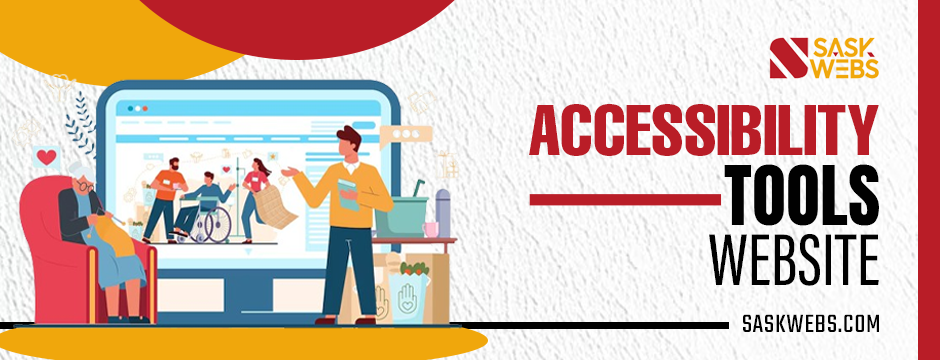
As the digital world expands, it becomes more important to make websites accessible to everyone, including people with disabilities. Web accessibility means designing websites so that everyone can use and interact with them easily. This inclusivity is not just a moral and legal duty but also helps reach a wider audience and improves the experience for all users. The future of accessibility tools for websites looks bright, with new trends and innovations making the web more inclusive. In this blog, we will explore these trends and the innovations driving the future of web accessibility.
Understanding Web Accessibility
Web accessibility means making websites usable by everyone, no matter their abilities or disabilities. This includes designing and building websites so people with vision, hearing, movement, and thinking difficulties can easily use them. The Web Content Accessibility Guidelines provide advice on how to make websites more accessible.
The Importance of Accessibility Tools
Accessibility toolsare important for making sure websites meet accessibility standards and work well for everyone. These tools help find and fix problems, making it easier for developers to create inclusive websites. As technology improves, new tools and features are being developed to make websites even more accessible.
Emerging Trends in Web Accessibility
1. Artificial Intelligence and Machine Learning
Artificial intelligence (AI) and machine learning (ML) are changing web accessibility. These technologies can automatically find and fix accessibility problems, making it easier for developers to create accessible websites. AI tools can look at website content and suggest improvements, like adding descriptions to images or making colors easier to see.
2. Voice Assistants and Voice Search Optimization
Voice assistants like Amazon’s Alexa, Google Assistant, and Apple’s Siri are getting more popular. These accessibility tools for website let people talk to websites instead of typing, which is helpful for those who have trouble moving around. Making websites work well with voice search means everyone, including those who use voice commands, can access the content easily.
3. Advanced Screen Readers
Screen readers are really important for people who can’t see well because they turn text and pictures on websites into speech, or braille. Screen readers are getting better and easier to use, thanks to new technology. Now, they can understand tricky things on websites, like moving pictures and videos.
4. Accessible Rich Internet Applications (ARIA)
Accessible Rich Internet Applications is like a special toolkit for websites. It has different parts, like roles, states, and properties, that you can add to website elements to make them easier to use for people who need assistance, like those using screen readers. It helps make sure that interactive parts of a website work well with assistive technologies.
5. Automated Accessibility Testing Tools
Automated accessibility testing tools are getting better, so developers can find and fix accessibility problems faster. These tools can be added to the development process, so accessibility is thought about from the beginning to the end of making a website.
Innovations Driving the Future of Accessibility Tools for Websites

1. Real-time Captioning and Transcription
Live captioning and transcription services are getting better and easier to use. These services show captions as audio and video play, helping people with hearing problems understand better. Better speech recognition technology is making these services more accurate and available.
2. Personalized Accessibility Settings
Personalized accessibility settings let users change how websites look and work to fit their needs. They can adjust things like text size, colors, and how they move around the site. Letting users personalize their settings makes websites easier to use for everyone and includes more people.
3. Virtual and Augmented Reality
Virtual reality and augmented reality are new technologies that can make websites easier to use. They give people with disabilities a more immersive way to interact with digital stuff. These technologies can also make fake worlds feel real, which can be helpful for learning and practicing things.
4. Cross-Platform Accessibility
Making sure web content works well on different devices and platforms is very important. People use all sorts of devices to go online, like phones, tablets, and smartwatches. When web content works the same way on all these devices, it makes sure everyone can use it easily.
5. Blockchain for accessibility
Blockchain technology, which is famous for being used in cryptocurrencies, is being looked at for its potential to help with web accessibility. Blockchain can offer secure and decentralized access to accessibility tools like transcripts, captions, and assistive technology software. This means these tools can be easily accessed and cannot be changed or tampered with.
Conclusion
The future of accessibility tools websites is promising, with advancements like AI and voice assistants making websites more inclusive. Staying informed about these innovations is crucial for developers and designers to ensure websites meet the needs of all users. Prioritizing accessibility creates a more equitable web experience for everyone. SaskWebs is committed to this goal, offering expertise to make your website accessible to all and fostering a welcoming online environment for every user.






